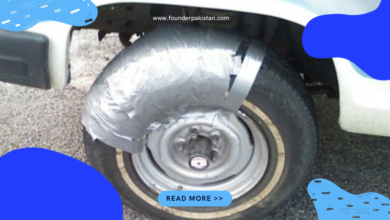Products that customers swipe right to

Finding Product Market Fit
Riddle me this. What is something that keeps a founder awake at night? You guessed it right or didn’t, either way it is product market fit. A relatively simple term with a much complex application. Simply put product market fit is when the markets i.e. consumers accept your product’s value offering.
Eric Ries in his book ‘The Lean Startup’ writes,
‘And then – nothing happened! It turns out our fears were unfounded, because nobody even tried the product. At first I was relieved because at least nobody was finding out how bad the product was, but soon they gave way to serious frustration …… Customers wouldn’t even download our product’
For context this was when IMVU was in its early stages and the product was still being developed. Eventually after several customer interviews the team at IMVU was able to see what the customer actually wanted.
‘Our customers did not want an IM add-on; they wanted a standalone IM network …… Our customers were not intimated by the idea of having to take their friends with them to a new IM network; it turned out that hey enjoyed the challenge. Even more surprising, our assumption that our customers would want to use avatar-based IM primarily with their existing friends were also wrong. They wanted to to make new friends, an activity that 3d avatars are particularly well suited to facilitating’
Source: The Lean Startup by Eric Ries
In 2017 Superhuman was in a similar situation where the founder Rahul Vohra was actively figuring out product market fit for his startup.
‘Inspired by this approach, we set out to measure what the responses would be for Superhuman. We identified users who recently experienced the core of our product, following Ellis’ recommendation to focus on those who used the product at least twice in the last two weeks’
Source:
Rahul Vohra Shares Superhuman’s Product Market Fit Framework
Side Note: By inspiration Rahul Vohra here means Sean Ellis who in his blog recommended that to measure product market fit ask customers how would they feel if they could not use the product anymore? Ideally you want to have more than 40% of customers who say ‘very disappointed’
To know more:
To see the survey:
Product/Market fit survey by Sean Ellis and GoPractice
Both scenarios had one element in common ‘the customer.’
Always start with the customer:
Don’t assume what customers want. This is what Quibi did in April 2020 where they launched a mobile streaming app for teenagers which charged a 5$ per month subscription fee. They dropped the shutters permanently in September 2020 when they could only get 500k subscribers that too with investments from Disney, In contrast the app aimed to acquire 7 million users by the end of 2020.
Learn more on Quibi here,
What is product/market fit? Definition and measurement
Before taking your product out to the world ask yourself this question ‘does the customer really need this product’ and before answering this as the customer ‘do you really need this product.’ Founders are emotionally attached to their products. It is their baby. This creates a bias where objective thinking suffers. Often you as a founder might think this is the absolute best product I have created and the world is yet to see but that is just your countless sleepless nights and huge amount of effort talking. The customer might have different views which if revealed pre launch can make your life much easier.
Go Backwards:
Once you have customer feedback. Analyze it and match it with your product offering. Rather than saying the product adds this value, ask yourself this is the value does my product fulfill it? At the core of every product market fit is customer acceptance. Rather than developing a product and then making the customer want it through marketing and sales, ask the customer what they want and then develop the product. This is what Superhuman did where pre launch they wanted to find product market fit. According to
‘But no matter how intense the pressure, I wasn’t ready to launch. Common practice would be to “throw it out there and see what sticks,” which may be fine after a few months of effort when the sunk cost is low. But the “launch and see what happens” method seemed irresponsible and reckless to me — especially given the years that we had invested.’
Value trumps marketing and sales combined:
No amount of marketing or sales can ever make a bad product sell good. Going down the cash burn model where the majority of your cash is burned on marketing and sales without much focus on product development as per customers’ needs will always result in eventual shutdown.
Product market fit guru Marc Anderseen says,
‘You can always feel when product/market fit isn’t happening. The customers aren’t quite getting value out of the product, word of mouth isn’t spreading, usage isn’t growing that fast, press reviews are kind of “blah”, the sales cycle takes too long, and lots of deals never close.
And you can always feel product/market fit when it’s happening. The customers are buying the product just as fast as you can make it—or usage is growing just as fast as you can add more servers. Money from customers is piling up in your company checking account.’
Source:
Pmarchive · The only thing that matters
Personal Opinion:
Product market fit happens at a psychological level where the customers feel that this product will make their lives easier, happier, comfortable, modern etc. Tap into these emotions. Ask yourself what emotions you would feel using this product. Humans are emotional creatures. Your product should compliment these emotions.




